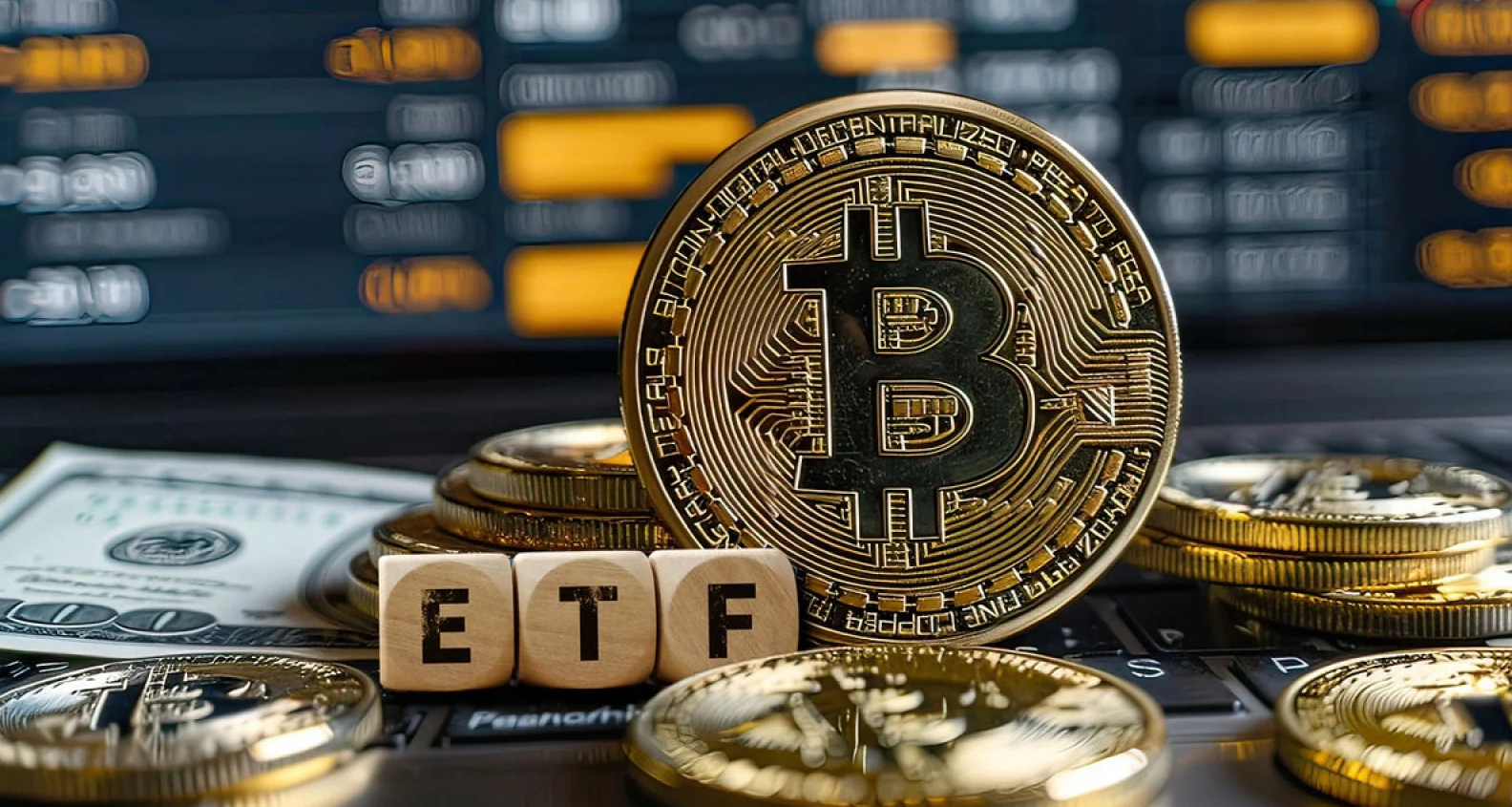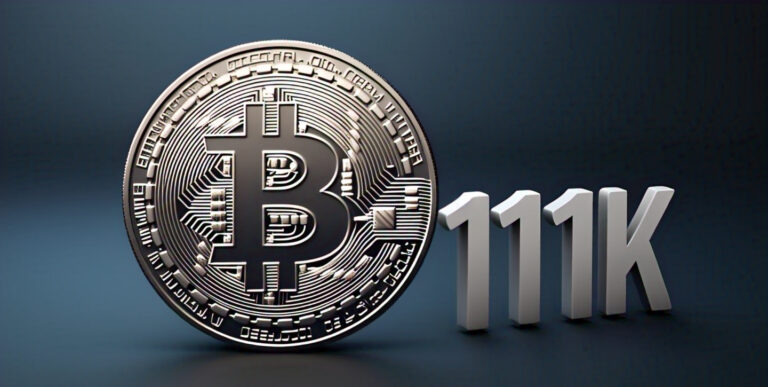Once more, making headlines is Bitcoin, breaking past milestones and achieving a new all-time high of nearly $111,000, confirming its dominance as the leading player in the market. This milestone signifies a psychological triumph for institutional investors and long-term holders and signals a significant change in the world financial mood toward distributed digital assets. The current surge builds on bullish tendencies because of macroeconomic factors, rising adoption, and changing regulatory clarity.
What is driving the exponential increase of Bitcoin?
The recent increase in Bitcoin’s price comes from a convergence of elements that go much beyond ordinary market speculation. Fundamentally, the increasing institutional acceptance is driven by companies like BlackRock, Fidelity, and ARK Invest, which have greatly increased their direct ownership and spot ETF exposure to Bitcoin. These companies oversee trillions in assets, and their acceptance of Bitcoin has given conventional investors fresh confidence.
Concurrent with this declining U.S. currency, ongoing inflation worries, and doubts about conventional banking systems have made Bitcoin an increasingly appealing hedge. Often compared to “digital gold,” bitcoin’s hard-capped supply of 21 million coins and distributed character make it a tempting store of value. Many investors are shifting their money into assets like Bitcoin, which has liquidity and deflationary properties, as inflation-adjusted yields on Treasury bonds falter.
World Events: Modulating the Velocity of Bitcoin
Particularly in areas like the Middle East and Eastern Europe, geopolitical unrest has sped capital flight into safe-haven assets. Bitcoin has become a global, censorship-resistant store of wealth amid wars, sanctions, and currency devaluations. As people hunt substitutes for failing fiat currencies, Bitcoin acceptance is exploding in countries such as Argentina, Turkey, and Nigeria.
El Salvador’s Bitcoin experiment has kept developing, meanwhile. As the first government to accept Bitcoin as official currency, El Salvador’s inclusion of Bitcoin into national fiscal policy has attracted international attention. The country’s cooperation with Strike, a Lightning Network-based payment system, shows the valuable application of Bitcoin for daily transactions and transfers, therefore supporting its actual value.
Spot Bitcoin ETFs and institutional inflows: their purpose
Mainstream capital has been unleashed for the crypto market with the acceptance and introduction of spot Bitcoin exchange-traded funds (ETFs) in the United States. Retail and institutional investors alike have found clarity and accessibility from BlackRock (IBIT), Grayscale (GBTC), and Valhalla (BRRR). These tools lower perceived risk and boost acceptance by allowing investors to be exposed to Bitcoin without personally owning or managing the digital asset.

Mass inflows into these ETF products have been recorded on on-chain analytics systems such Glassnode and IntoTheBlock; cumulative holdings of these ETF products exceed one million BTC. Driven by long-term accumulation and ETF demand, the decrease in market supply has resulted in a supply constraint that is raising price pressure.
Bitcoin Halving and Scarcity Economics
The April 2024 Bitcoin halving event dropped the block reward from 6.25 to 3.125 BTC. Halving events have historically set off major bull runs because of the declining rate of fresh supply. For example, the 2020 halving came before a tenfold rise in the value of Bitcoin during the next year.
The economics of shortage are being felt, especially with mining difficulties at an all-time high and energy-efficient mining operations growing ever more vital. Reduced issuing paired with increasing demand has produced the ideal storm for priceincreasese.
Technological Development and Layer Two Solutions
Improvements in infrastructure help to explain Bitcoin’s ascent as well. A Layer 2 scaling solution, the Lightning Network has grown very quickly. Over 6,000 BTC locked in Lightning channels, microtransactions and cross-border payments have become quicker and less expensive, hence increasing the feasibility of Bitcoin for daily use.
Moreover, systems like Stackallowng innovative contract capabilities on Bitcoine broadening its use cases beyond a basic store of wealth. Developers and businesspeople drawn to these ideas create an ecosystem akin to what Ethereum first encountered in its early years.
Bitcoin Sentiment Fuels Public and Celebrity Hype

Sentiment measures from sites like Santiment and LunarCrush reveal that social interaction around Bitcoin has exploded alongside its price. Over X (previously Twitter), Reddit, and Discord, mentions of “Bitcoin ATH,” “BTC $111K,” and “Bitcoin bull market” are trending. Reflecting general customer interest, Google Trends shows a surge in search questions including “Is it too late to buy Bitcoin?” and “Bitcoin price prediction 2025.”
Public personalities and celebrities have also weighed in. While venture capitalists like Chamath Palihapitiya and Cathie Wood continue doubling their optimistic expectations, tech billionaire Elon Musk reiterated his belief in distributed finance, and some suggest Bitcoin might exceed $250,000 within the next 24 months.
Regulatory Landscape: From Clarity to Uncertainty
Investor confidence has beengreatlyh raised by regulatory certainty in big countries. Different from other digital assets judged as securities, the Securities and Exchange Commission (SEC) in the United States has changed its attitude on Bitcoin. Concurrently, the European Union’s Markets in Crypto-Assets Regulation (MiCA) framework gives crypto companies legal certainty, validating the asset class.
Still establishing themselves as crypto hotspots, nations such as Singapore, Switzerland, and UAE draw talent, creativity, and money. These innovative positions not only help preserve the ecosystem but also affect worldwide regulatory trends.
Looking ahead, is $111,000 only the start?
The rise of Bitcoin above $111,000 could indicate the start of a new monetary paradigm rather than merely a market top. Bitcoin is leading a financial revolution as distributed finance becomes more ingrained and mistrust of fiat banks persists. Its attraction cuts beyond ideas, geography, and demography.
While improving digital finance, the launch of Central Bank Digital Currencies (CBDCs) in different nations may inadvertently encourage more consumers to use Bitcoin. Unlike CBDCs, Bitcoin provides privacy, autonomy, and a deflationary supply—qualities that really appeal in a society increasingly concerned about financial manipulation and monitoring.

